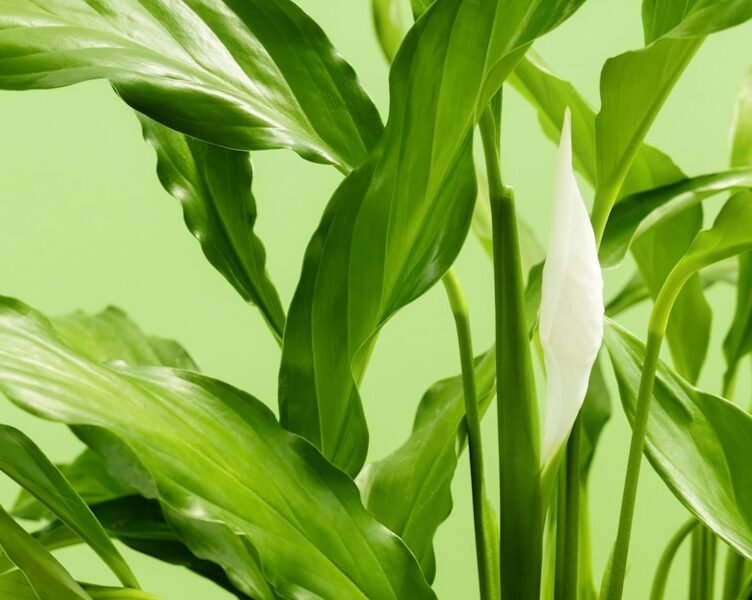When establishing a hydroponic indoor vegetable garden, selecting the appropriate hydroponic system is a crucial consideration. Several types of hydroponic systems are available, each with its unique advantages and disadvantages. For instance, the deep water culture system is a popular choice for beginners due to its simplicity and affordability, whereas the nutrient film technique system is ideal for those with limited space as it requires less water and nutrients.
The ebb and flow system is another option, renowned for its versatility and ability to accommodate a diverse range of plants. It is essential to carefully evaluate the specific needs of your plants, as well as your own preferences and limitations, when selecting the suitable hydroponic system for your indoor garden. In addition to the type of system, the size and scale of your indoor garden are also critical factors to consider.
The scope of your garden will dictate the size and capacity of the hydroponic system you choose. Are you planning to cultivate a small selection of herbs and leafy greens, or do you aim to grow a wide variety of vegetables? Furthermore, it is essential to consider factors such as maintenance requirements, ease of use, and the overall cost of the system.
By carefully evaluating these factors, you can ensure that you select the optimal hydroponic system for your indoor vegetable garden.
Key Takeaways
- The key components needed for a hydroponic indoor vegetable garden include a hydroponic system, nutrient solutions, suitable vegetables, proper lighting, temperature and humidity control, air circulation and ventilation, and regular maintenance and monitoring.
- When choosing the right hydroponic system, consider factors such as space, budget, and the type of vegetables you want to grow. Options include deep water culture, nutrient film technique, and drip systems.
- Essential nutrient solutions for healthy plant growth in hydroponic gardens include a balanced mix of macronutrients (nitrogen, phosphorus, potassium) and micronutrients (iron, calcium, magnesium) to support plant growth and development.
- Select the best vegetables for indoor hydroponic gardens based on their adaptability to hydroponic systems, space requirements, and your personal preferences. Popular choices include lettuce, herbs, tomatoes, and peppers.
- Lighting requirements for indoor hydroponic gardens are crucial for plant growth and should include a combination of natural sunlight and artificial grow lights to provide the necessary spectrum and intensity for photosynthesis.
Essential Nutrient Solutions for Healthy Plant Growth
Monitoring and Adjusting Nutrient Levels
It’s important to carefully monitor and adjust the nutrient levels in your hydroponic system to ensure that your plants are receiving the right balance of nutrients at all times. In addition to providing the right balance of nutrients, it’s also important to consider the pH level of your nutrient solution.
pH Level Considerations
Most plants prefer a slightly acidic pH level, typically between 5.5 and 6.5. However, different plants may have slightly different pH preferences, so it’s important to research the specific needs of the vegetables you plan to grow in your indoor garden. Maintaining the correct pH level is crucial for ensuring that your plants can effectively absorb the nutrients they need for healthy growth.
Setting Up for Success
By carefully monitoring and adjusting your nutrient solutions and pH levels, you can ensure that your hydroponic indoor vegetable garden is set up for success.
Selecting the Best Vegetables for Indoor Hydroponic Gardens
When it comes to selecting vegetables for an indoor hydroponic garden, there are several factors to consider. Some vegetables are better suited to hydroponic growing than others, so it’s important to carefully research and select the best options for your specific setup. Leafy greens such as lettuce, spinach, and kale are popular choices for hydroponic gardens due to their relatively quick growth and high yield.
Herbs such as basil, cilantro, and parsley also thrive in hydroponic systems and can add a burst of flavor to your meals. In addition to leafy greens and herbs, many other vegetables can be successfully grown in hydroponic systems. Tomatoes, cucumbers, peppers, and strawberries are all popular choices for indoor hydroponic gardens, as they can thrive in the controlled environment provided by a hydroponic setup.
It’s important to consider the space and resources available in your indoor garden when selecting vegetables to grow. Some plants may require more space or specialized equipment, so it’s important to carefully consider the specific needs of each vegetable before making your selections.
Lighting Requirements for Indoor Hydroponic Gardens
| Key Components | Description |
|---|---|
| Grow Lights | Provide artificial light for plant growth |
| Hydroponic System | Allows plants to grow in a soilless environment |
| Nutrient Solution | Provides essential nutrients for plant growth |
| Growing Medium | Supports plant roots and retains moisture |
| pH and EC Meter | Measures acidity and nutrient levels in the water |
| Temperature and Humidity Control | Regulates environmental conditions for optimal growth |
| Seeds or Seedlings | Starting point for plant growth |
In an indoor hydroponic garden, providing the right lighting is crucial for ensuring healthy plant growth. Since natural sunlight may be limited or inconsistent in an indoor setting, artificial lighting is often used to provide plants with the light they need to thrive. When selecting lighting for your hydroponic garden, it’s important to consider factors such as intensity, spectrum, and duration.
Different plants have different lighting requirements, so it’s important to research the specific needs of the vegetables you plan to grow. LED grow lights are a popular choice for indoor hydroponic gardens due to their energy efficiency and ability to provide a full spectrum of light that closely mimics natural sunlight. T5 fluorescent lights are another popular option for indoor gardens, as they provide a good balance of intensity and spectrum at an affordable price point.
It’s important to position your lights at the correct distance from your plants to ensure that they receive the right amount of light without being damaged by excessive heat or intensity. By carefully selecting and positioning your lighting, you can ensure that your indoor hydroponic garden receives the light it needs for healthy plant growth.
Temperature and Humidity Control in Hydroponic Gardens
Maintaining the right temperature and humidity levels is essential for ensuring healthy plant growth in an indoor hydroponic garden. Since indoor environments can be prone to fluctuations in temperature and humidity, it’s important to take steps to control these factors and create a stable growing environment for your plants. Most vegetables thrive in temperatures between 65-75°F (18-24°C), so it’s important to monitor and regulate the temperature in your indoor garden to ensure that it stays within this range.
In addition to temperature control, it’s also important to consider humidity levels in your indoor hydroponic garden. Most vegetables prefer a humidity level between 50-70%, so it’s important to monitor and adjust humidity levels as needed. In some cases, you may need to use a dehumidifier or humidifier to maintain the right levels for your plants.
Proper air circulation can also help to regulate humidity levels and prevent issues such as mold or mildew from developing in your indoor garden. By carefully monitoring and controlling temperature and humidity levels, you can create an ideal growing environment for your hydroponic vegetables.
Proper Air Circulation and Ventilation in Indoor Hydroponic Gardens
Proper air circulation and ventilation are crucial for healthy plant growth in an indoor hydroponic garden, in addition to temperature and humidity control.
The Importance of Air Circulation
Good air circulation helps prevent issues like mold, mildew, and pests from developing in your garden, while also ensuring your plants receive an adequate supply of carbon dioxide for photosynthesis. In an indoor setting, natural air movement may be limited, so it’s essential to take steps to promote air circulation and ventilation in your hydroponic garden.
Promoting Air Circulation
One way to promote air circulation is by using fans or air pumps to move air around your indoor garden. This can help prevent stagnant air from developing in certain areas and ensure all your plants receive a steady supply of fresh air.
Ventilation Options
It’s also important to consider ventilation options such as exhaust fans or vents to remove stale air from your growing area and promote healthy air exchange. By carefully considering air circulation and ventilation in your indoor hydroponic garden, you can create an environment that promotes healthy plant growth and prevents issues like mold or pests from developing.
Maintenance and Monitoring of Hydroponic Systems
Once your indoor hydroponic garden is up and running, it’s important to regularly maintain and monitor your system to ensure that it continues to function properly. This includes tasks such as checking nutrient levels, adjusting pH levels, cleaning equipment, and inspecting plants for signs of disease or nutrient deficiencies. Regular maintenance is essential for preventing issues such as clogs or leaks from developing in your system, which can negatively impact plant health.
In addition to regular maintenance, it’s also important to monitor the overall health and growth of your plants on a regular basis. This includes checking for signs of pests or disease, monitoring plant growth and development, and adjusting environmental factors such as lighting or temperature as needed. By carefully monitoring your hydroponic system and plants, you can quickly identify and address any issues that may arise, ensuring that your indoor garden continues to thrive.
In conclusion, setting up a successful hydroponic indoor vegetable garden requires careful consideration of several key components. From choosing the right hydroponic system and providing essential nutrient solutions to selecting the best vegetables and maintaining proper environmental conditions, there are many factors to consider when setting up an indoor hydroponic garden. By carefully researching and planning each component of your garden, you can create an ideal growing environment for healthy and productive vegetable plants.
With proper care and attention, an indoor hydroponic garden can provide a bountiful harvest of fresh vegetables year-round.
FAQs
What is a hydroponic indoor vegetable garden?
A hydroponic indoor vegetable garden is a method of growing plants without soil, using a nutrient-rich water solution. This method allows for the cultivation of vegetables indoors, using artificial light sources and controlled environmental conditions.
What are the key components needed for a hydroponic indoor vegetable garden?
The key components needed for a hydroponic indoor vegetable garden include a growing medium (such as perlite or rockwool), a nutrient solution, a water reservoir, a pump for circulating the nutrient solution, a pH testing kit, a light source (such as LED or fluorescent lights), and a growing container or system.
Why is a nutrient solution important for a hydroponic indoor vegetable garden?
The nutrient solution is important for providing essential nutrients to the plants in a hydroponic system. It typically contains a balanced mixture of essential minerals and elements that plants need for healthy growth, such as nitrogen, phosphorus, potassium, calcium, and magnesium.
What type of light source is best for a hydroponic indoor vegetable garden?
LED or fluorescent lights are commonly used as the light source for hydroponic indoor vegetable gardens. These light sources provide the necessary spectrum of light for plant growth and can be adjusted to mimic natural sunlight for different stages of plant development.
How is pH testing important in a hydroponic indoor vegetable garden?
Maintaining the correct pH level of the nutrient solution is crucial for the health and growth of plants in a hydroponic system. A pH testing kit is used to monitor and adjust the pH level of the nutrient solution to ensure that plants can effectively absorb the nutrients they need.








1 Comment